9 Tips for Choosing the Best PWC, Part 1

For just plain fun on the water, it’s hard to beat a personal water craft or PWC. They’re fast, agile and allow exhilarating riding for those with adventurous spirits.
On the other hand they can be great family rides adding lots of entertainment at the lake house or the shore for long weekends. And ride-control features make them suitable even for younger members of the household - the age limit for solo operation is 16 in many states, even as young as 12 in some.
Best of all, they don’t break the bank - they’re among the most affordable of watercraft, easy to buy, easy to tow and easy to store. Fuel consumption is also moderate compared to many powerboats.
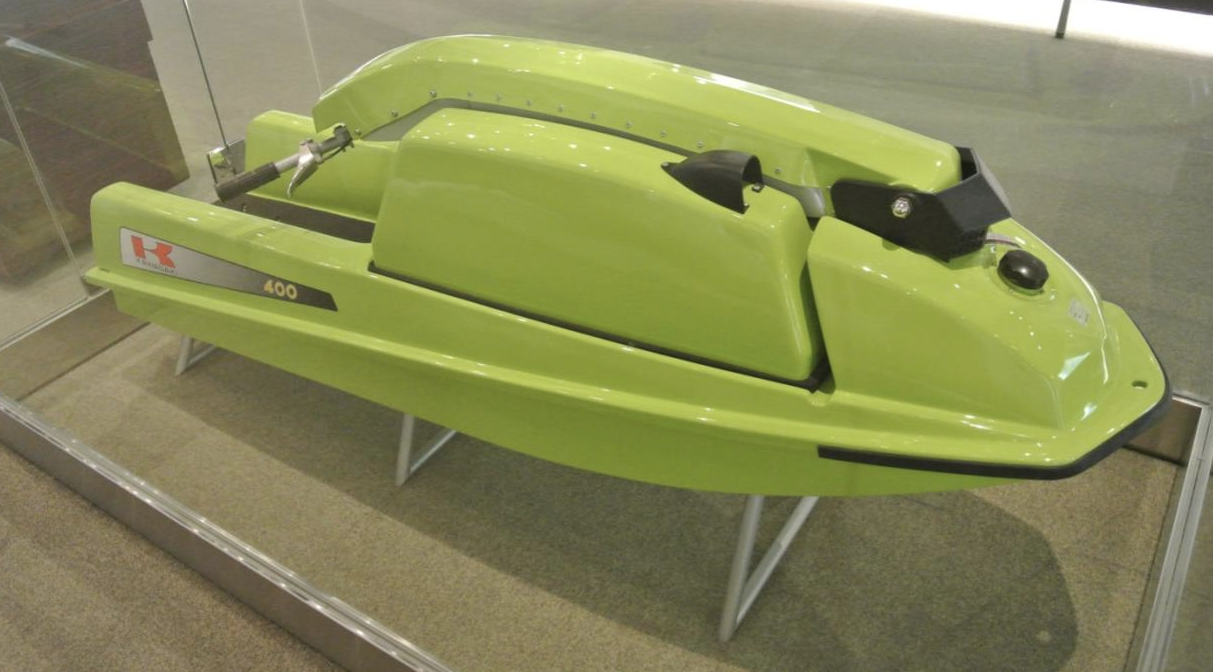
Water-jet-powered PWC’s have been around since the early 1970’s, with gearhead and motorcyclist Clayton Jacobsen II of L.A. and also Kawasaki Motors Corporation USA, headquartered in Chicago, both claiming the original.
Jacobson was ultimately paid some $50 million by Kawasaki for his claim, pretty much establishing him as the father of the genre, but Kawasaki was definitely the first commercial manufacturer of the machine that became known as the “Jet-Ski”—basically, the self-propelled water-ski.
The machines quickly evolved into sitdown vehicles more like a motorcycle than a water-ski, and the modern personal watercraft or PWC was born.
Yamaha’s Wave Runner series and Bombardier’s Sea Doo’s are the best-known models in addition to Kawasaki Jet Ski® today. A few fledgling makers are dabbling in premium-grade PWC’s clearly designed for the transom garage of larger yachts at this point, but production details are scarce.
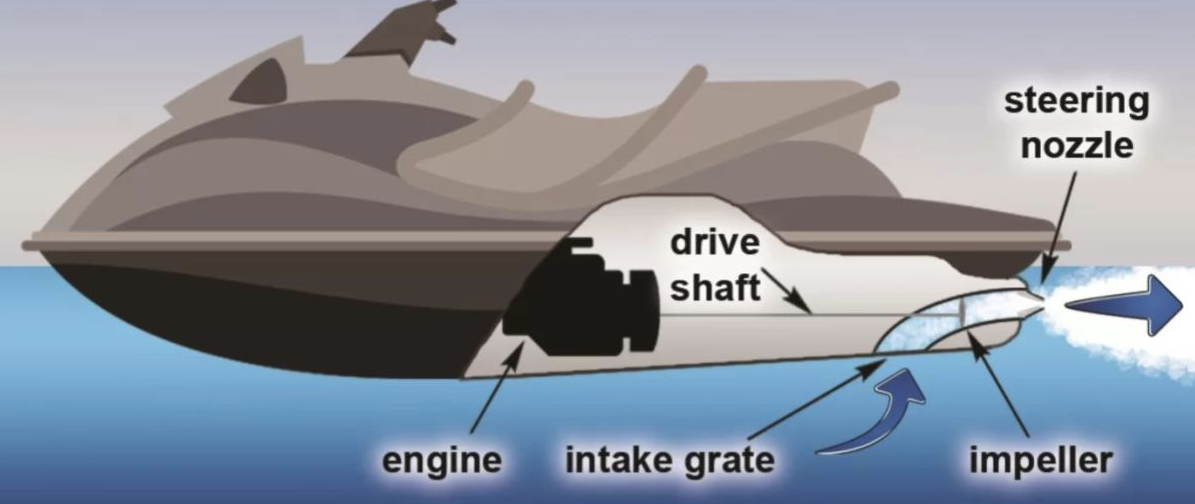
Water-jet power is the essential feature of all PWC’s, eliminating the dangerous, spinning propeller of most powerboats. On boats that frequently dump the rider, the safety factor of the jet drive is obvious.
The capability of jet steering systems to allow PWC’s to turn almost within their own length is also a big part of the attraction, allowing impressive trick riding with experience.
The waterjet has a relatively large intake under the hull, a fully-enclosed impeller powered by a 3 or 4 cylinder four-stroke engine from 900 to 1800 cc, and a relatively small steerable output nozzle.
The compression of the water through the impeller generates thrust, and the steerable nozzle controls steering. Baffles can redirect the thrust to stop the PWC quickly, or to put it into reverse.
PWC’s are designed for one to three riders, and are typically ridden by straddling the center-mounted engine similar to riding a motorcycle, though some models are built for standup operation with no seating.

Though the primary use remains enjoyable riding and agile maneuvering, PWC’s have also proven themselves very useful work vehicles for marine law enforcement, marine construction, and famously, for towing intrepid surfers into the world’s largest waves. There are also models designed specifically for racing and for fishing.
While nearly all are currently powered by gasoline four-strokes, a few electric power models are starting to appear on the market—see the Taiga Orca in the company listings below.
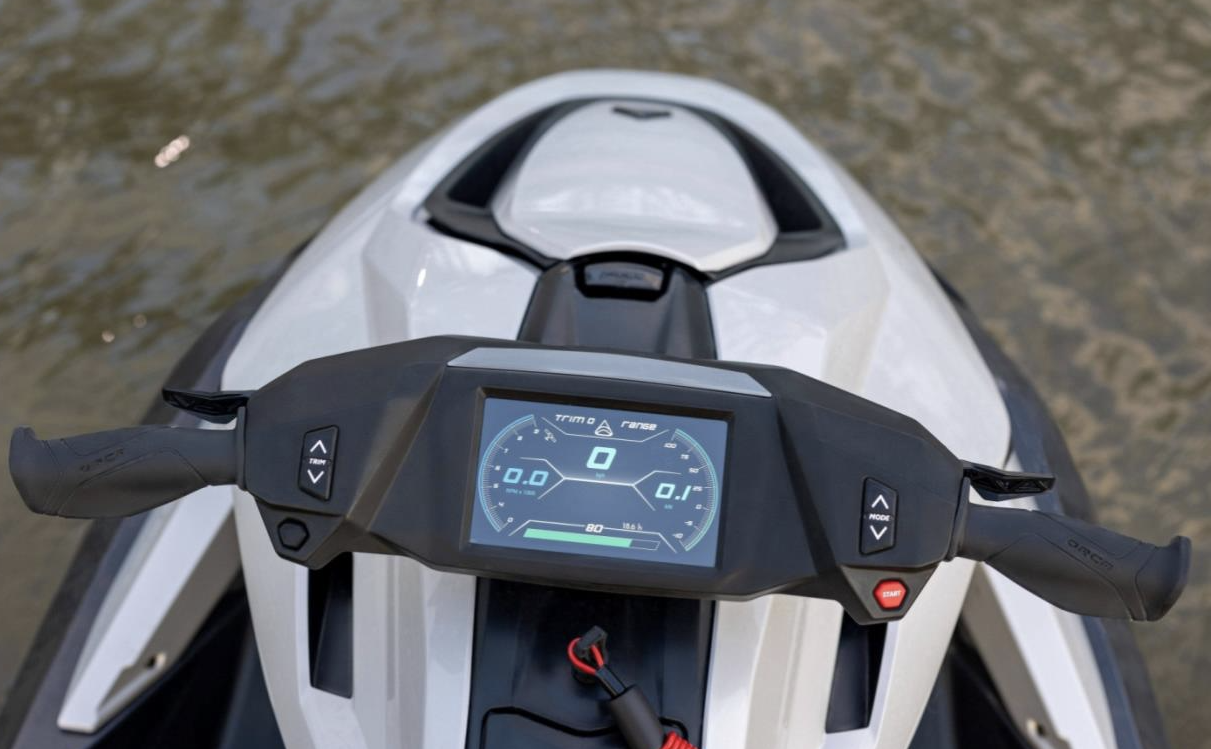
How They're Priced
Most builders have one or two basic platforms, which they offer with various levels of accessories and features packages—economy, standard and luxury. Small economy models made for one or two riders can be priced at under $6,000, while the largest three-rider models fully loaded can exceed $20,000.
The most expensive PWC we have heard of—which we hurry to add is just a concept so far—will be priced at nearly $80,000 if and when it goes into production in Florida later this year Check out the concept photo below.
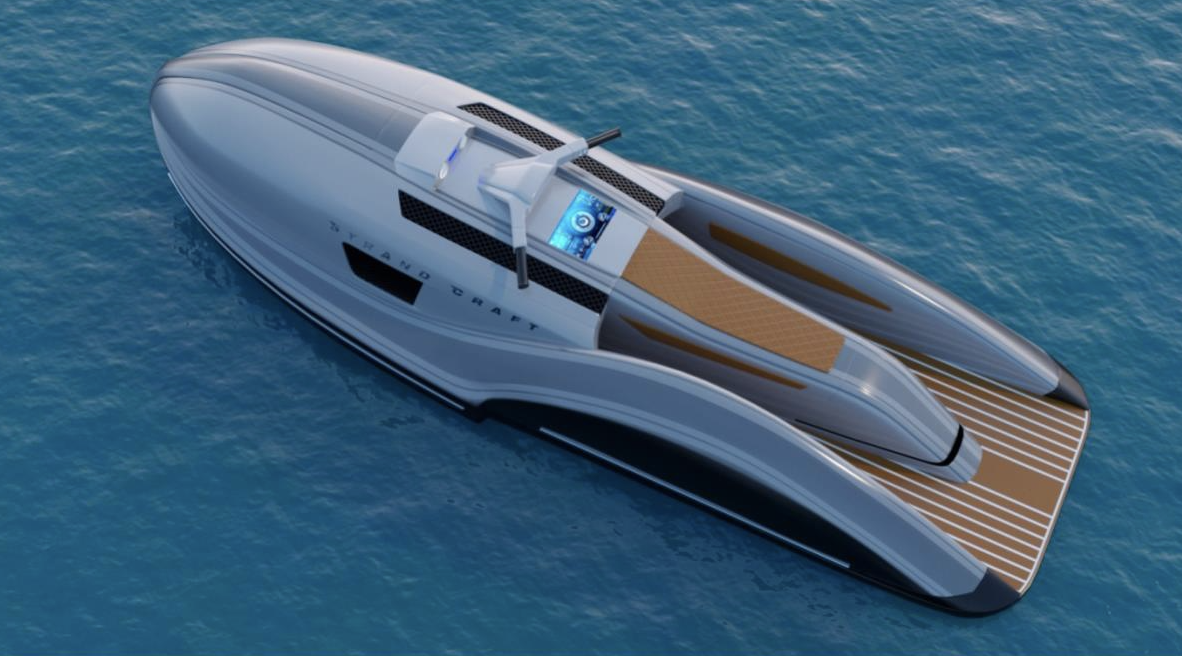
How Fast Can PWC's Go?
Through an agreement with the U.S. Coast Guard, manufacturers selling in the U.S. limit speed of all PWC’s to 67 mph to avoid a horsepower race and the resultant dangers to riders.
Most performance models can run a bit faster with a light load and in perfect conditions, into the low 70’s, but hitting the water at these speeds is not for the faint of heart. (Don’t forget the wet suit or you’ll regret it.)
Just because you’d like to know, the world speed record for modified PWC’s is 127 mph, set by a turbocharged Yamaha FZR WaveRunner in 2020.
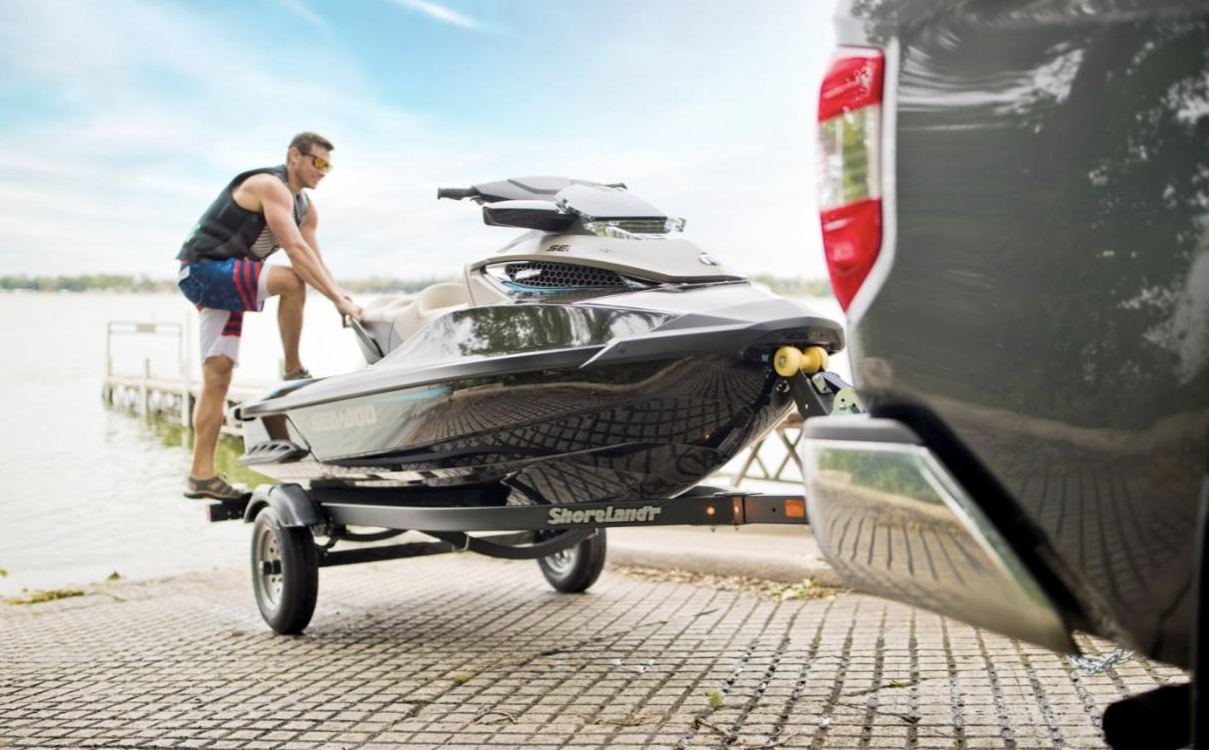
Buying a PWC is a relatively simple transaction, but there are a number of parameters you’ll want to consider to get one (or more) that best suits you and your family. Here are a few things to look at, from our friends at Discover Boating.
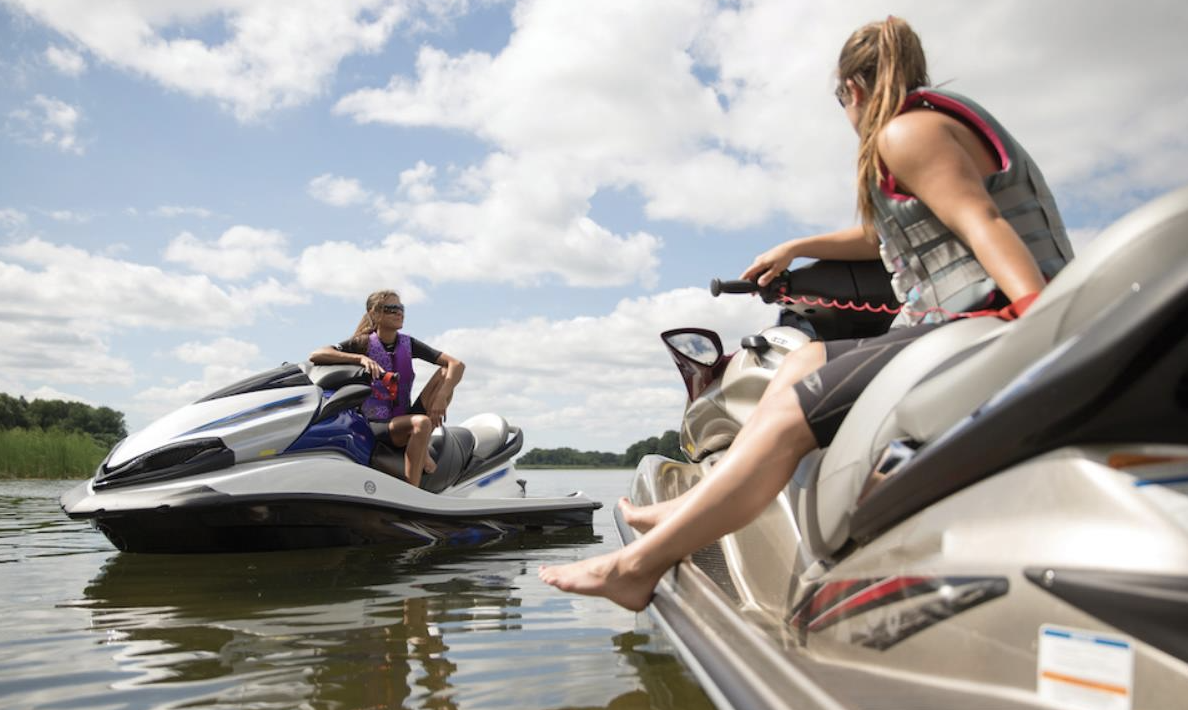
1. Determine the number of passengers you want to carry.
2. Compare different models—rec-light, recreation, touring/luxury, performance, or stand-up.
3. Decide if you'd like to buy new or pre-owned.
4. Set your budget and explore financing options.
5. Start shopping—find out where to buy.
6. Once you’ve selected a brand and model, consider options—do you need added storage? A GPS? An ice chest? Fishing options?
7. Research personal watercraft values and consult pricing guides.
8. Work with a dealer—and close the deal.
9. Don’t forget the trailer—even if you’ll store it at your dock or in the water, a trailer is great for checking out distant locations—and for getting your PWC in for service when needed.
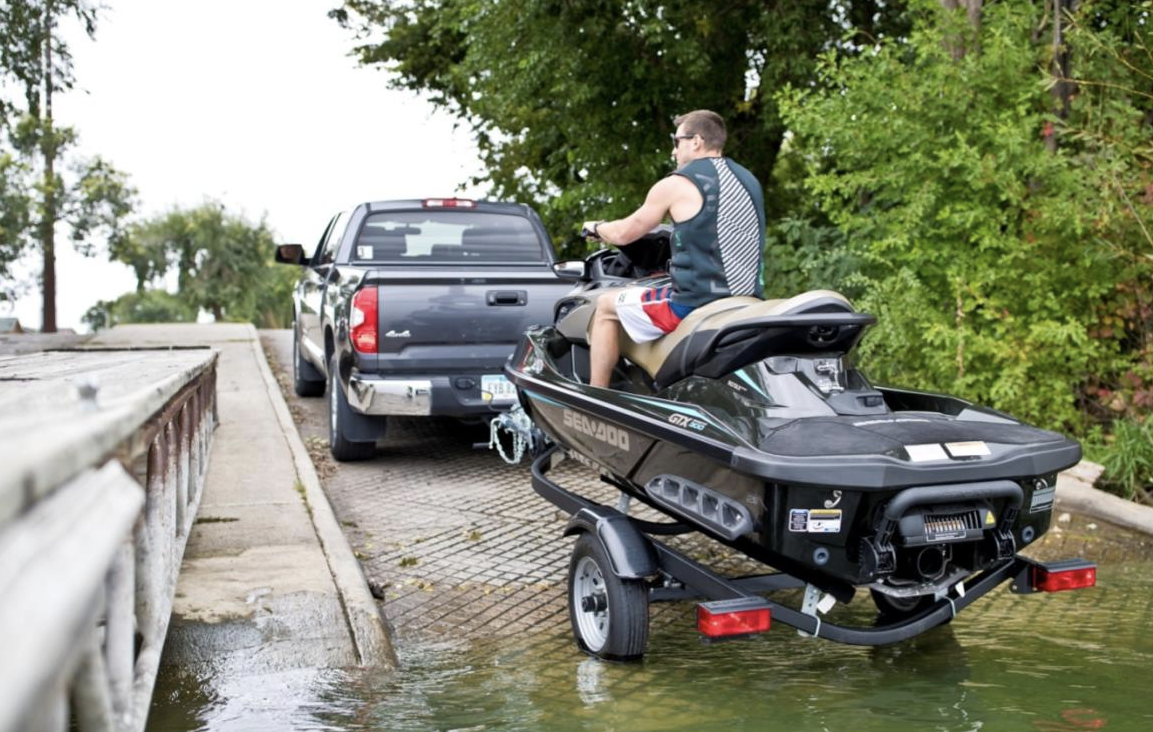
In Part 2, we’ll look at the many choices in PWC’s available on the market for 2023 and beyond.